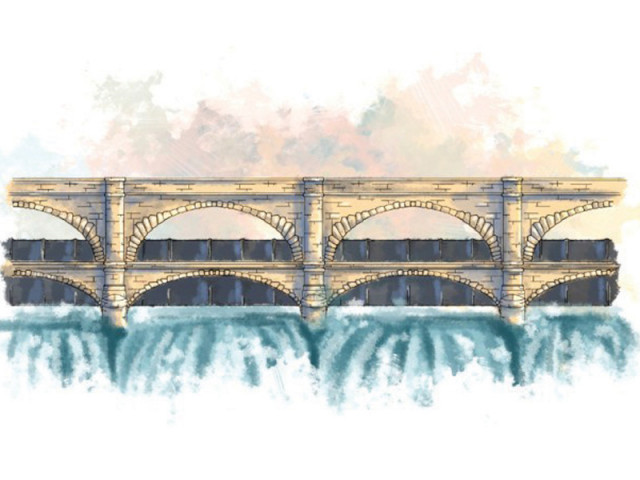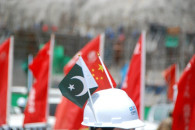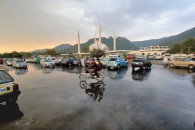Sixty eight medium-sized dams do not produce a single megawatt
Former WAPDA chief makes out strong case for building Kalabagh Dam.

The 68 medium-sized dams Pakistan has built have an average storage capacity of 8,000 acre feet of water, markedly lower than the estimated capacity of Kalabagh Dam which is equal to the capacity of 750 medium dams. PHOTO: CREATIVE COMMONS
Talking to the media at the Lahore Press Club on Thursday, former chairman of the Water and Power Development Authority Shamsul Mulk, who is known to be a key backer of the Kalabagh Dam, underlined the need of arriving at a consensus as he believed that people were in favour of the dam but some political parties resisted.
Pakistan has built only 68 medium-sized and two big dams in its life, in contrast 46,000 medium-sized and large dams have been constructed in the world in the 20th century. Of these, China has built 22,000 dams, the US 6,575 dams and India about 4,291 dams.
“If Kalabagh Dam is so harmful for Pakistan, then construction of these thousands of dams should have destroyed the entire world,” argued Mulk. “But we know these three countries are believed to be the main economies of the world only because they build dams to save water, generate cheap electricity and ensure food availability.”
The 68 medium-sized dams Pakistan has built have an average storage capacity of 8,000 acre feet of water, markedly lower than the estimated capacity of Kalabagh Dam which is equal to the capacity of 750 medium dams.
The worst thing was that these 68 dams did not generate a single megawatt of electricity, Mulk said. “For the benefit of people, we should have gone for hydroelectric power projects, but we did the opposite and restricted our hydropower projects to about 6,400 megawatts.”
Still, he said, projects of more than 40,000MW capacity were waiting to be developed, which would generate electricity at Rs1.54 per unit compared to the cost of Rs16.50 per unit for furnace oil plants, on which the country was relying, Mulk said. Had Kalabagh Dam been built, it would have generated 12 billion units of electricity at Rs1.54 per unit. In its absence, the shortfall was being met through electricity production at a cost higher by Rs15 per unit. This meant the country was bearing an additional burden of Rs180 billion or Rs1,000 per capita per year (12 billion units multiplied by Rs15), Mulk said.
People of Sindh were paying Rs40 billion a year in electricity bills, Khyber-Pakhtunkhwa Rs29 billion and Balochistan Rs7 billion. But was there a benefit of even a single rupee to them for not building Kalabagh Dam, Mulk asked.
Critics argued that Sindh would turn into a desert if the dam was built, but the reality was that the province would get additional 4.75 million acre feet of water, he said, adding Punjab would receive additional 2.04 MAF, Balochistan 1.56 MAF and Khyber-Pakhtunkhwa 2.01 MAF.
Before the construction of Tarbela and Chashma reservoirs, Sindh was receiving on an average about 36 MAF – one acre feet is equal to 43,560 cubic feet – from Indus River. After the commissioning of Tarbela, Mulk claimed, Sindh got average 43 MAF from the river system, an increase of 7 MAF.
Published in The Express Tribune, September 27th, 2013.
Like Business on Facebook, follow @TribuneBiz on Twitter to stay informed and join in the conversation.

















COMMENTS
Comments are moderated and generally will be posted if they are on-topic and not abusive.
For more information, please see our Comments FAQ